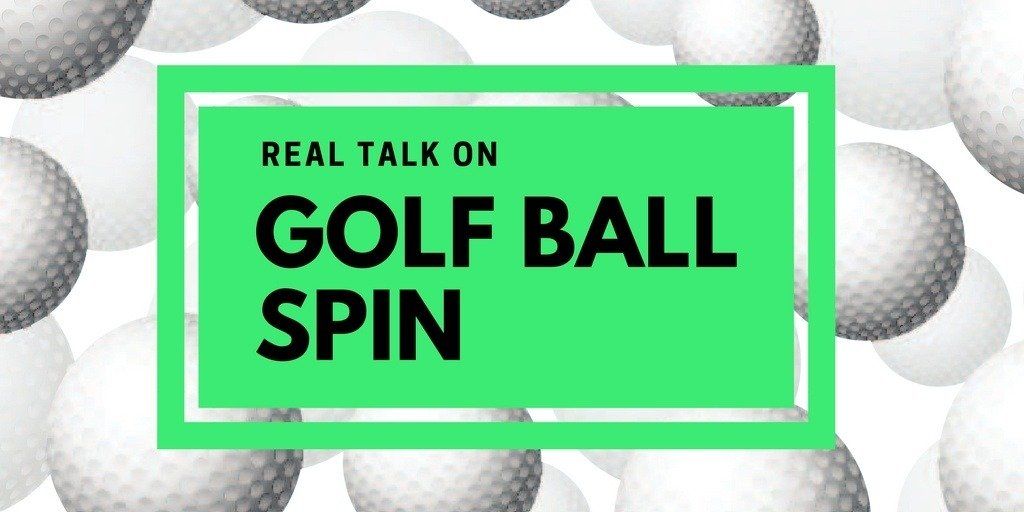
Discussing the topic of golf ball spin can lead down a very windy, complicated rabbit hole. Quite frankly, it can get exhausting. In this article, I'd like to get simple for all of you.
I'm going to tackle some key topics and set the record straight on a few concepts that I believe will help your game.
Here we go...
The Driver
When looking at spin with the driver it’s important to take a step back and think about the purpose of the club.
Hit. Ball. Far.
I think the most important thing to look at is your carry distance. All things in your swing being relatively equal, the distance your ball rolls will vary far more than the distance your ball carries.
So we know we want the ball in the air, soaring over the middle of the fairway. What keeps a ball in the air once you get it there? Ball speed, and ball spin. You either need a lot of one and a little of the other - or in the case of most club golfers, a mild helping of both. A ball traveling 220mph may only need to spin 2,000 revolutions per minute to maximize carry distance, whereas a ball traveling 120mph may need twice that.
This is where you’ll find fitting facilities with launch monitors helpful. A good driver fitting should include a comparison between the driver you currently play, and the drivers you and your fitter decide are good options for you. You can also get a good feel for the effects on distance from spin, speed, and other influencers.
Irons
As we begin to discuss the clubs you plan to hit into the green, it becomes extremely important to be in control over where the ball stops. We still want carry distance, but we don’t want the ball running off when it hits the ground.
Our two factors for controlling our ability to stop the ball are spin (hello, old friend), and land angle. If I drop a ball straight down, it won’t go anywhere; I don’t need spin. This is a flop shot.
If I want my much lower landing hybrid to stop, I need spin.
There’s a lot of information available out there that can send you down a dangerous rabbit hole if you start wondering, “what’s the optimal spin rate and land angle for a 7 iron?” Stop now. Optimal carries far and stops fast. No matter the golfer, this is our goal with our irons in its most simple form.
Let's just leave it at that.
Wind
Imagine how easy it is to hit a 6 iron straight when you’re chipping with it. It’s very hard to slice it or curve it at all. But when I ask you to hit it full speed, well now it’s very hard to hit it straight.
The effects on the ball from the air surrounding it that occur when the ball starts spinning more and moving faster (the shots that are hard to hit straight....) are also found when you’re hitting a ball into the wind.
Hitting into the wind exacerbates things; whichever direction the ball was going to curve before, it’s going to curve more that same direction now. So how do you stop this extra curve?
Remember our 6 iron chip shot? Take an extra club and remove speed so you put less spin on the ball. That way, when the wind adds some, things won’t get out of control.
Wedges
What a popular topic. I’m going to shed some light on this that no one talks about, but before I do, allow me to give you a quote.
Golf becomes hard when you lose control of your ability to stop the ball
You must find a way to stop the ball when you’re pitching, but there’s something no one’s telling you about that’s preventing you not from spinning it, but from seeing the effects of spin. That thing is the golf course.
Spin and the effects of spin cost money. To get the most spin you have to play clean, relatively new wedges and a premium ball.
If you want to see the rewards, or effects of your spin, you actually have to play golf courses with well watered, healthy greens. You have to play golf courses with finely mowed fairways that truly allow your club face to touch the ball without any interference from the grass. This obviously also costs money. But take it from me, for $75-$125 a round, you can probably find awful greens at one course, and spectacular greens at another not too far from your home.
Now that you’ve bought the wedges and you’re playing the courses, what do you have to do to create spin? It’s really simple.
Don’t do that thing you may have read a thousand times. Don’t lean the shaft forward. Without opening the club face at address, you want to impact the ball with as much loft as you can. I’ve found the best drill to get players to feel this is to swing a wedge with their bottom hand. You’ll feel the head want to pass your hands. Embrace that feeling, and with your new wedges, maybe new home course, and new technique, you’ll be spinning your wedges soon.
We care about the protection of your data Read our Privacy Policy